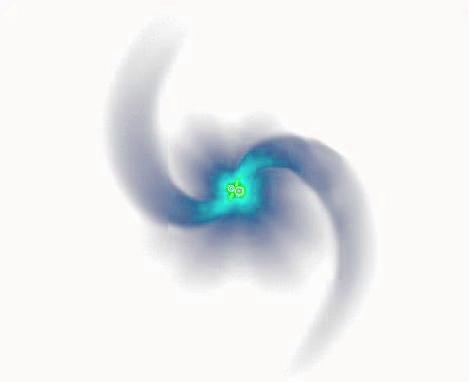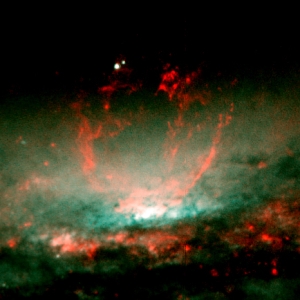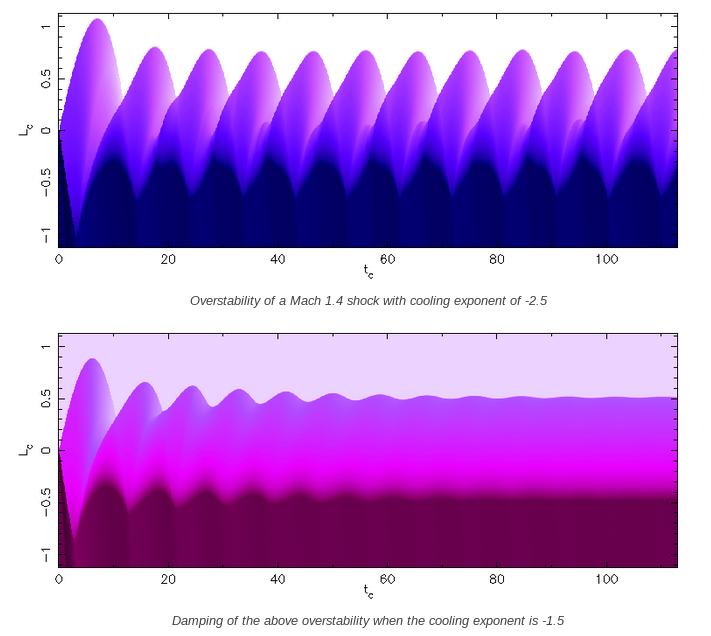Stellar Winds, Galactic Superwinds & Shocks
Astrophysical flows, driven by the injection of mass, momentum and energy from either individual stars or groups of stars occur over a vast range of spatial and energy scales. On the smallest scales, hypersonic winds from massive stars in binary systems collide and generate X-ray emission from the very hot shocked gas. On larger scales, these winds interact with the local circumstellar or interstellar medium (ISM) to produce wind-blown bubbles (WBBs), and supernova ejecta interact with the local ISM or nuclear winds in the central regions of active galaxies. On the largest scales, multiple supernova events generate highly pressurized regions which power superwinds that flow out of galaxies into intergalactic space.
Although these phenomena are astrophysically very distinct, there are common features in the physics and hydrodynamics that make a broad approach to their study feasible and appropriate. For example, many of the flows occur in astrophysical media where cool clumps are embedded in a hotter substrate and an understanding of mass injection from these clumps is essential. Theoretical studies of these flows are accompanied by careful comparison with observational data to verify the complex physical and hydrodynamical modelling used. Similarly when considering collisions between winds we gain time on X-ray satellite observatories to analyse gas at temperatures of ten to a hundred million degrees in superwinds and colliding winds so these can be compared to theory. We also use space-borne instruments to observe infrared emission in star forming regions.
Mass-loss from Massive Stars

Galactic Superwinds

On large scales, superwinds are created when supernova remnants (SNRs) within star-forming regions overlap to create highly pressurized superbubbles which burst out into intergalactic space. Superwinds are important re-distributors of heavy elements, mass, and momentum, and their role in enriching and heating the intergalactic medium is attracting much attention.
There is currently great debate on the physical origin of their X-ray emission. We are addressing this issue using a novel approach based on the ranges of SNRs evolving in an inhomogeneous medium. Such models should resolve some of the outstanding issues and will aid the use of X-ray observations as diagnostics of starburst superwinds.
Shocks
Shock physics becomes relevant in many areas of astronomy; work done on the overstability of low Mach number shocks is relevant to the evolution of SNRs interacting with the hot phase of the ISM (e.g., in starbursts), and to shocks in dense molecular clouds. An important finding is that the stability properties of low Mach number shocks are dramatically altered if the shocked gas is able to cool below the temperature of the pre-shock gas. In such circumstances, low Mach number shocks behave in many ways as if they had higher Mach numbers.

Suggested Reading
 Blowing Bubbles in the Cosmos
Blowing Bubbles in the Cosmos
Astronomical Winds, Jets, and Explosions
By T.W. Hartquist, J.E. Dyson, and D.P. RufflePublished January 2004, 208 pages
Oxford University Press
